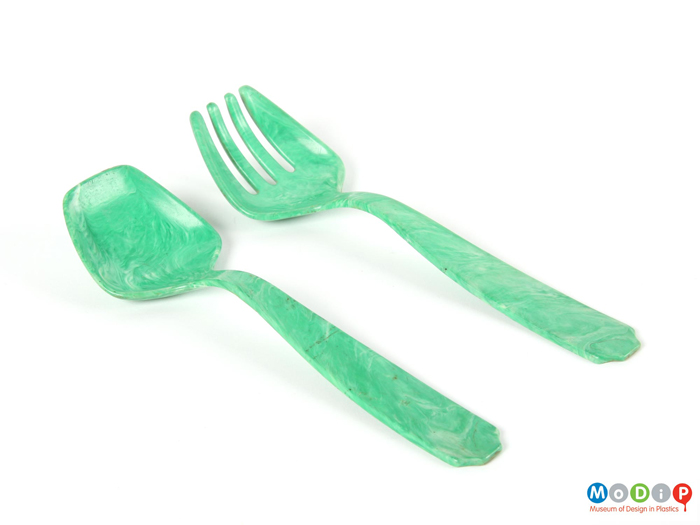Salad servers
Chosen because of their interesting design and the thought of summer salads in the garden.

Case number - AIBDC : 003361
A pair of green plastic salad servers, circa 1940s, comprising an angular spoon and fork
View more images on the MoDiP site
View more images on the MoDiP site
| Designer | Unknown - Wanted |
| Manufacturer | Unknown - Wanted |
| Country | Unknown - Wanted |
| Date | 1940-1949 (circa) |
| Dimensions | length 240 mm |
| Materials | plastic, Erinoid - trade name, CF, casein formaldehyde |
| Method | unknown - Wanted |
| Colour | green |
Join the hunt at: 10mostinvolved
Facebook Feed
25/05/14
26/05/14
27/05/14
30/05/14
08/06/14
19/06/14
26/06/14
27/06/14
29/06/14











 #10
#10 #10;</body></html>" />
#10;</body></html>" />


Case notes
Salad Servers: Case AIBDC : 003361
This object is part of a trial to see if giving specific guidance on research methods makes the game a more successful means of obtaining information about the objects featured.
There's very little we do know about these stylish salad servers. We would be pleased to hear anything at all about them. I would start by looking at books about collecting plastics. Does that mean a trip to your local library?
Wonderful account of the development of Erinoid
Special Agent Radcliffe has provided a wonderful account of the history of Erinoid including the invention of a new type of plastic made from casein, a protein found in milk, by Victor Schulz in 1908, the adaptaion of using casein granules rather than milk or curd by E.A.Petersen and the resulting registration of the UK product, Erinoid, in 1913, and the history of the firm into the 1980s. To read the full story please go to the Evidence locker.
has provided a wonderful account of the history of Erinoid including the invention of a new type of plastic made from casein, a protein found in milk, by Victor Schulz in 1908, the adaptaion of using casein granules rather than milk or curd by E.A.Petersen and the resulting registration of the UK product, Erinoid, in 1913, and the history of the firm into the 1980s. To read the full story please go to the Evidence locker.